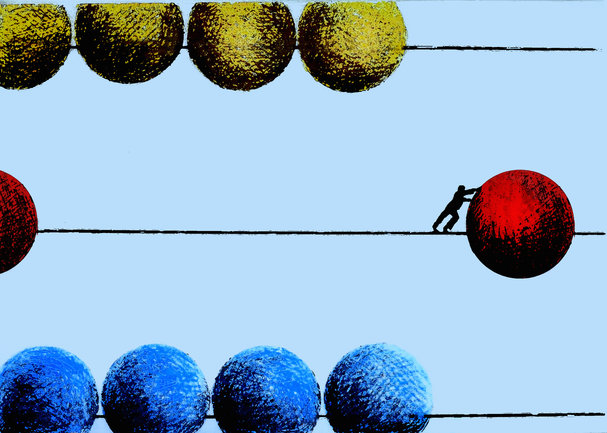
Credit: Ikon Images/Getty
China's citations catching up
Papers from China are growing in influence and volume, yet the US remains supreme.
30 November 2017

Ikon Images/Getty
China’s ranking as the world’s second-largest producer of articles in the Web of Science (WoS) database in 2009, raised eyebrows among scientists who questioned the quality of the output. Recent citation figures suggest that the country’s output is also of widespread scientific interest, with scope for improvement.
According to an annual report by the national research body, the Institute of Scientific and Technical Information of China (ISTIC), released on 31 October 2017, papers published by researchers in China have been cited more than any other country except the United States in the 11-year period since 2009. But their average citations per paper remain below the global mean. Citation counts are among the few metrics used to evaluate scientific impact.
“In the past 10 years, the citation situation of Chinese papers has improved dramatically,” says Wu Yishan, vice president of the Beijing-based think tank Chinese Academy of Science and Technology for Development (CASTED), and former chief scientist of ISTIC.
Between 2007 and October 2017, Chinese scientists and engineers were cited a total of 19 million times in the WoS. While still far behind the 66 million citations received by US-based researchers, the numbers have risen at a fast pace. In the past year alone, China’s ten-year citation count has grown by 29.9%.
But when adjusting for size, China’s rank drops from 2nd to 15th. While the country's figures have been steadily rising, papers from China were cited an average 9.4 times between 2007 and 2017, just above India’s average paper citation rate, but below Switzerland, the Netherlands, the United States and about a dozen other countries.
China’s growing investment in research is the reason for the surge in high-impact papers, says Qiu Zilong, a neuroscientist at the Shanghai Institute of Neuroscience, Chinese Academy of Sciences, who has published several papers on the biological mechanisms underpinning autism in journals such as Nature and Nature Communications. “If you have a good idea and a good reputation, you will never worry about funding,” says Qiu.
In 2016, China’s research and development (R&D) expenditure increased by 10.6% from the previous year to 1.57 trillion yuan (US$235.9 billion). Around 5% of the money was spent on basic research, in line with the 6% spent by the United States in 2012.
According to Liu Li, a science policy analyst at Tsinghua University, China’s real percentage of basic research could be much higher. Unlike most data gathered from OECD countries, Chinese expenditure figures do not include salaries of basic research scientists, says Liu.
Zhou Yaoqi, a biotechnology researcher from China, now at Griffith University in Australia, says the citation numbers cannot be explained entirely by increased funding. Other reasons include: Chinese scientists moving into hot research areas, such as nanotechnology and cancer biology, and an increasing number of graduates entering scientific fields, including returnees from abroad. International collaborations are another factor contributing to the rise in papers published in high-impact journals, lifting the profile of Chinese scholars.
However, China’s growing citation numbers could be overstating the case, warns Zhou. “Citations do not necessarily mean quality,” he says, offering the example of universities investing in trending research fields such as CRISPR to harvest citations.
Too much reliance on bibliometric analyses such as citation counts, number of papers and journal impact factors does not encourage scientists to take risks, and discourages them from exploring unknown areas, says Zhou. Instead, research papers should be assessed on their scientific importance, as reflected by valuable comments from peers in the same field.
“A more sophisticated evaluation is needed to allow the majority to produce better science,” says Zhou. “So much money and the future of science in China is at stake.”
